Navigating the Future: The Dual Evolution of Strategic and People-Centric HR
today2024.04.24.

WHY SHOULD YOU CARE?
Discover the future of HR through the insightful perspectives of Jon Ingham, a pioneer in strategic and people-centric HR. This article explores how HR is transitioning beyond its traditional roles to become a key strategic partner, emphasizing a profound understanding of people to drive business success. Dive into how innovative structures and a dual focus on organizational and individual goals are reshaping HR into a pivotal element of modern business success.
As organizations continually shift and change, the HR function is undergoing a profound transformation too, embracing a more strategic role that transcends traditional boundaries. This evolution is not solely about aligning people with overarching business objectives; it increasingly focuses on a holistic, people-centric approach that prioritizes the well-being and development of each employee. Jon Ingham, a recognized expert in the field, encapsulates this trend, stating, “HR is progressing towards a more strategic future,” highlighting a significant shift towards integrating human considerations at the core of the business strategy.
Simultaneously, Ingham notes the importance of maintaining a balance between achieving strategic objectives and enhancing the employee experience, suggesting that HR must evolve to view employees not just as means to an end but as central stakeholders in their own right. This dual approach mirrors the broader transformation occurring within HR practices globally—where the goal is not only to fulfill the traditional roles of compliance and management but to forge paths that enable both organizational agility and individual fulfillment.
In this evolving framework, HR’s role is expanding to include a deeper focus on individual needs and aspirations, treating employees as the end customers of the services it provides. According to Ingham, this shift is crucial for the future of HR, necessitating a move beyond traditional metrics and practices to encompass a more nuanced understanding of human dynamics at work. By doing so, HR not only contributes to the strategic success of organizations but also champions the personal success of its people, thereby embodying a truly transformative force in the world of work.
This redefined vision of HR invites a paradigm shift—where strategic alignment and people-centric practices coalesce to form a dynamic, forward-thinking discipline that promises to reshape the contours of the workplace. It is a vision that necessitates innovative thinking, empathy, and a robust commitment to fostering environments where businesses and individuals alike can thrive.
Multi-Faceted HR Value: Expanding the Scope and Impact
HR is now challenged with a complex, multi-layered mandate to deliver value at various levels, encompassing everything from basic compliance to innovative practices that foresee and meet future needs. Ingham illustrates this concept through a three-tiered model of HR value: first, fulfilling fundamental requirements that keep the organization compliant and functional; second, thoroughly understanding and addressing the specific needs of the business and its people; and third, transcending expectations to deliver surprising and innovative solutions that can transform the organizational landscape.
This framework is crucial in both strategic and people-centric facets of HR. On the strategic front, HR’s role in enhancing business capabilities involves not only aligning human capital with the strategic objectives of the organization but also proactively identifying opportunities for improvement and innovation. According to Ingham, “In any area of life or work, we can deliver value,” a perspective that underscores the expansive potential of HR when it fully leverages the inherent capabilities of its workforce. This strategic engagement is about more than just support; it’s about actively driving the organization’s success through thoughtful and anticipatory human capital management.
Conversely, when viewed through a people-centric lens, this model emphasizes elevating the individual experiences and outcomes of employees. It’s about understanding and fulfilling their needs and aspirations, not merely in their current roles but also in their career trajectories and personal development. This approach involves a deep commitment to the employee as a whole person, which includes fostering a supportive and engaging work environment, offering tailored development opportunities, and anticipating future needs that may not yet be voiced.
Ingham’s assertion that the “true strategic nature of HR unfolds when it leverages the potential inherent in its people” is a call to action for HR professionals to think beyond traditional boundaries and explore how both human and business potentials can be maximized. This dual focus not only ensures compliance and operational efficiency but also champions innovation and personal fulfillment, leading to more sustainable business practices and a more motivated, committed workforce.
Expanding HR’s value proposition in this way requires a shift in perspective—from seeing HR as a primarily administrative function to viewing it as a critical driver of both strategic vision and human potential. This expanded role of HR is instrumental in transforming organizations into adaptable, forward-thinking entities where business goals are achieved in harmony with employee well-being and growth. By adopting this multifaceted approach to delivering value, HR can truly become a pivotal element in the organization’s long-term success and resilience.
Integrating Organization Design: Tailoring Structures for Enhanced Alignment
The integration of strategic HR with OD is crucial for crafting a harmonious alignment between people and their work within any enterprise. This alignment is more than mere adherence to established best practices; it is about customizing and refining organizational structures and methodologies to meet the unique demands and characteristics of each company. Jon Ingham emphasizes the importance of this tailored approach, stating, “Adding value through strategic OD includes creating a better-fit organization,” which underscores the need for flexible, adaptive structures that truly reflect the dynamics of the organization and its workforce.
In practice, effective organization design involves a thoughtful analysis of the existing workflows, roles, and team configurations to identify opportunities for improvement. It’s about dismantling one-size-fits-all solutions in favor of bespoke strategies that optimize both individual and collective performance. This could mean redefining job roles to better suit the strengths and career aspirations of employees or restructuring teams to enhance collaboration and innovation.
Ingham advocates for the use of horizontal teams and agile methodologies as key components of a modern organizational design. Horizontal teams, organized around specific processes, projects, products, or customer outcomes, facilitate a cross-functional collaboration that breaks down traditional silos and enhances the speed and quality of decision-making. Agile methodologies, which prioritize flexibility and rapid responses to change, further empower these teams by fostering a culture of continuous improvement and adaptation. These approaches not only streamline operations but also significantly boost employee engagement and satisfaction by involving them more deeply in shaping their work environments and outputs.
The strategic integration of HR and OD extends beyond structural adjustments, touching on the very culture of the organization. It demands a proactive stance from HR professionals to not just execute changes, but to lead them by advocating for structures and systems that not only align with the current business strategy but are also robust enough to evolve with future challenges. This involves a constant reassessment of the alignment between business objectives and workforce capabilities, ensuring that the organization remains responsive to both internal shifts and external market pressures.
Strategic HR and OD can dramatically transform an organization by fostering a culture that values flexibility, collaboration, and innovation. This transformation is about building a sustainable model that supports long-term growth and success. As such, the role of HR in organization design is not just operational but fundamentally strategic, playing a critical role in navigating the organization through the complexities of modern business landscapes. This expanded view of HR and OD enhances business agility and ensures that employees feel valued and understood, further driving their motivation and productivity.
People-Centric Approaches: Enriching Employee Experience and Engagement
The people-centric model of HR revolutionizes how employees are perceived within the organization, treating them not merely as contributors to predefined roles but as central figures whose well-being and satisfaction are critical to the company’s success. Ingham articulates this perspective clearly, stating, “We need to see people as both the basis for a company’s strategic success and also an end customer of what we provide.” This philosophy extends beyond conventional employee experience frameworks by emphasizing a more profound, holistic approach to employee engagement and support.
“We need to see people as both the basis for a company’s strategic success and also an end customer of what we provide.”
Jon INgham
In a people-centric HR model, the focus shifts to understanding and addressing the comprehensive needs and aspirations of employees. This means supporting their professional roles and acknowledging and fostering their broader life goals and personal development. By adopting more personalized and empathetic approaches, HR can tailor its services and interventions to fit the unique circumstances of each employee, thereby enhancing their job satisfaction and loyalty. This approach involves a deep dive into individual employee journeys, utilizing feedback mechanisms and engagement surveys to truly understand their desires and pain points, and adapting HR policies to better meet these needs.
Such a model encourages a nurturing environment where employees feel genuinely valued and understood. It’s about creating a workplace where each employee’s contributions are recognized and where they are given ample opportunities for growth and self-improvement. This not only improves employee retention rates but also boosts overall organizational performance by ensuring that each member of the staff is motivated and equipped to bring their best selves to work.
Performance and Reward: Aligning and Empowering
Performance management within a strategic HR framework is fundamental in aligning employee efforts with the overarching business objectives. However, as Ingham suggests, “Creating value focuses more on ensuring people can leverage their potential,” indicating a shift towards enabling employees to meet and even exceed targets through innovation and personal development. This approach redefines performance management by emphasizing development conversations over traditional appraisal systems, encouraging ongoing feedback, and facilitating personal growth alongside achieving business goals.

Parallel to performance management is the evolution of reward systems, which also embody the dual focus of strategic alignment and personal empowerment. In a strategic HR context, rewards are designed to align employee actions with business needs, typically through performance-related pay and bonuses tied directly to business outcomes. However, in a people-centric model, the reward system expands to emphasize autonomy and personal achievements, recognizing and rewarding innovation, personal initiative, and contributions beyond the usual scope of work.
These rewards might include flexible working arrangements, professional development opportunities, and recognition programs that celebrate the outcomes and the unique ways employees achieve these results. This broader approach to rewards reflects a deep understanding of what motivates employees, fostering a culture where they can thrive personally and professionally.
In both performance management and reward systems, the emphasis is on understanding and leveraging the unique talents and potential of each employee. By doing so, HR drives business success and champions the individual growth of its people, creating a mutually beneficial environment where both the organization and its employees can succeed. This alignment—of strategic objectives with a people-centric philosophy—ensures a resilient, adaptive, and innovative organizational culture that stands ready to meet the challenges of the modern business world.
HR’s Evolving Role: A Paradigm Shift Towards Strategic and People-Centric Operations
The transformation of HR into a deeply strategic, people-centric function signifies a radical shift in the discipline, demanding an extensive enhancement of HR capabilities. Ingham captures the essence of this evolution, stating, “Most HR people link strategic HR with being more business savvy; however, creating value comes from understanding people.” This insightful assertion highlights that true strategic value in HR is derived from a business-centric viewpoint and a profound comprehension of human dynamics and needs. This transformation requires HR to move beyond traditional roles and adopt innovative organizational structures such as teams, communities, and networks that facilitate better collaboration and communication across the company.
“Most HR people link strategic HR with being more business savvy; however, creating value comes from understanding people.”
JOn ingham
These new structures are pivotal in aligning HR practices with the broader principles of organization design, which emphasize flexibility, responsiveness, and a focus on fostering a supportive and inclusive corporate culture. By implementing such frameworks, HR can better support diverse work styles and integrate a more holistic approach to employee well-being and engagement. The shift also involves leveraging technology and data analytics to gain deeper insights into employee behavior and needs, enabling more personalized and proactive HR interventions.
Furthermore, this evolution expands HR’s role from administrative functions to being a strategic partner in the boardroom, where the insights regarding organizational culture and employee engagement become critical to shaping business strategies. HR professionals are thus called upon to develop skills in areas such as change management, leadership coaching, and cross-functional collaboration to effectively drive the organization’s strategic objectives.
Conclusion: Envisioning a Strategic and People-Centric HR Future
The future of HR is clearly steering towards a model that is as strategic as it is people-centric. Ingham suggests that the HR discipline is on a trajectory that aims to align with and support business objectives and vigorously advocates for the recognition and fulfillment of individual employee needs and potentials. This dual focus serves to enhance organizational agility, enabling businesses to adapt swiftly to changes in the marketplace while maintaining a strong, committed, and motivated workforce.
In fostering such a dual focus, HR is instrumental in building an organizational culture that values continuous learning, open communication, and proactive problem-solving. This culture is essential for nurturing a workforce that is not only highly engaged but also equipped to face both current and foreseeable challenges. By championing both the business and its people, HR contributes to a sustainable competitive advantage where employee well-being and organizational success are interdependent and mutually reinforcing.
Thus, the evolving role of HR underscores a transformative approach where strategic thinking and people-centric practices converge to create a dynamic and resilient organizational environment. This redefined role of HR is crucial for businesses looking to thrive in an increasingly complex and unpredictable business landscape, highlighting the indispensable value of integrating strategic objectives with a genuine commitment to employee success.
Welcome to this new, brave world of HR, where – as Dave Ulrich puts it- the best is yet ahead!
Written by: Mihaly Nagy
Employee Experience Future of Work HR Strategy Strategy & Transformation
Previous post

labelArticles today2024.04.22.
Strategic HR Leadership: The Pivotal Role of HR in Organizational Success
WHY SHOULD YOU CARE? Discover how strategic HR leadership is impacting business outcome. This article delves into three compelling case studies, illustrating HR’s pivotal role in mergers, navigating the future [...]
Similar posts

labelArticles today2024.07.24.
AI-Powered HR: Strategic Benefits and Practical Applications

labelArticles today2024.06.24.








Post comments (0)